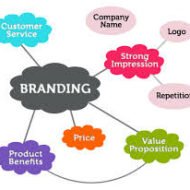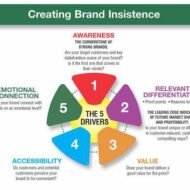Posted by Managementguru in Business Management, Marketing, Principles of Management
on Mar 4th, 2014 | 0 comments

Trends in Consumer Marketing FMCG’s: Consumer marketing is defined as creating and selling products, goods and services to individual buyers, as opposed to trying to appeal to businesses. You would have often heard about this – Fast moving consumer goods. These are nothing but products that are destined for use by ultimate customers or households that cannot be done with, as their usage is on a day to day basis. It might make some sense if I cite some examples – toothpaste, soaps, shaving creams, talcs, body lotions; these are meant for personal consumption and the demand for such products is direct and needs less of relationship marketing. Brand Focus: The number of customers in the consumer market is relatively large and the product purchase is influenced by even emotional factors. The focus is on the brand name and some people ardently follow a particular brand for ages, and this might be attributed to the effect that has been created by mass media advertising, or it might be due to the fact that they might identify themselves in some or the other with the product. It becomes a personal companion over a period of time. Impulse Buying: The decision making process is informal and often simple. Sometimes, it is influenced by the budget equations and feasibility. Impulse buying is also common in consumer market. At times, the consumers go adventurous and like to try their hands on new products. Branding is an important feature that retains the customer base for business firms and that’s why market analysts are attaching so much of significance to advertisements and sales promotions, to make their product a household name. Distribution Network: The firms must have a pucca distribution network linking different parts of the territories, where they want to expand their market. Say, for instance, a soft drink can be made popular by branding, but if there is no sufficient supply in the market, how do you expect customers to support your product? Equally important is providing the customers with a product size that best suits their budget. Consumer Marketing Infographic: Researchomatic.com Market Segmentation: Market segmentation recognizes the existence of distinct market groups, each with a distinct set of needs. Through segmentation, the firm directs its product and promotional efforts towards those markets that will benefit most from or will get the greatest enjoyment from its merchandise. Over the years, segmentation has become a popular strategic technique as the market is ever flushed with competitors. Influence of Price: A number of sellers are seen in this kind of consumer market and it is only the market that decides the price and not the participants. The marketers have nothing to lose if they sell at the market price, but if they plan to sell at slightly higher price levels than that of the market, it will prove detrimental to their objective. https://www.businessmodelscholar.com/wp-content/uploads/2020/06/3.pdf They are only price takers and not price makers. But they have the leverage to freely enter and exit the market. If the consumers foresee a fall in the general price levels of a product, they wait for some more time to take full advantage of the situation and decide to postpone the purchase. If the market shows an increasing price trend, it is the other way round, either they buy in bulk or go for substitutes.Say, if the price levels of coffee is on the rise, people opt for tea. Demand for consumer goods is price elastic. Consumers don’t care for much technical specifications; they only care for the quality backed up by a strong brand name. Post by Free MBA...

Posted by Managementguru in Marketing, Strategy
on Feb 17th, 2014 | 0 comments

Branding strategies What is Branding? What is a branding strategy? The process involved in creating a unique name and image for a product in the consumers’ mind, mainly through advertising campaigns. Brand = Trust What is the meaning of Brand Identity? A brand name adds a unique value proposition to a company offering differentiated products across a wide spectrum. It is an important component of a firm’s corporate identity. The logo that represents a brand is just not a symbol but is a source of commitment to the customers. It implies the benefits or added values that the company offers to satisfy its customers. Logos are a way to reach your customers in the initial stages when your company is in the offing. After a certain period of time, it becomes an icon that represents your company’s efficacy and achievement in terms of quality, price, customer service etc. Nowadays there is a pressing need for corporate firms to target both domestic and international markets. They have to create and establish local as well as global brand identity. A brand name tells the customer what to expect and it personifies your organization. Why in the first place a company needs a brand identity? See, it proves to be the most vital part of your marketing plan. How do you expect to reach your customers and convince them that you are there in the market to offer a superior product range than that of your rivals? You have to keep in constant touch with your customers and this is where a brand name comes in as a source of strength, as a promotional tool to speak for your product’s credibility and quality. You have to ask yourself the following questions while planning to develop a branding strategy: Does your brand create a feeling of trust in the minds of the customers? Does your brand deliver the benefits that it has promised to? Does your brand connect with the customers well at an emotional level? Is everybody including your competitors are aware of your brand? http://www.entrepreneur.com/article/272386 Strategic equations for Success You need to revitalize your think tank by including strategies that will hit the target on the right note. One way is to re-launch your existing products under new brand name to give a fresh lease of life to the products as well as attract new customers Another way is to introduce new product range, where the existing brand may not be suitable for the new product line Making the products more attractive and appealing by making small modifications in packing Also your brand can include a new range of similar products to be offered from your end. The brand strategy gives momentum to your business and aligns the activities of your organization towards successfully accomplishing the corporate objectives. It should be always remembered that branding is the only way to develop loyal...




